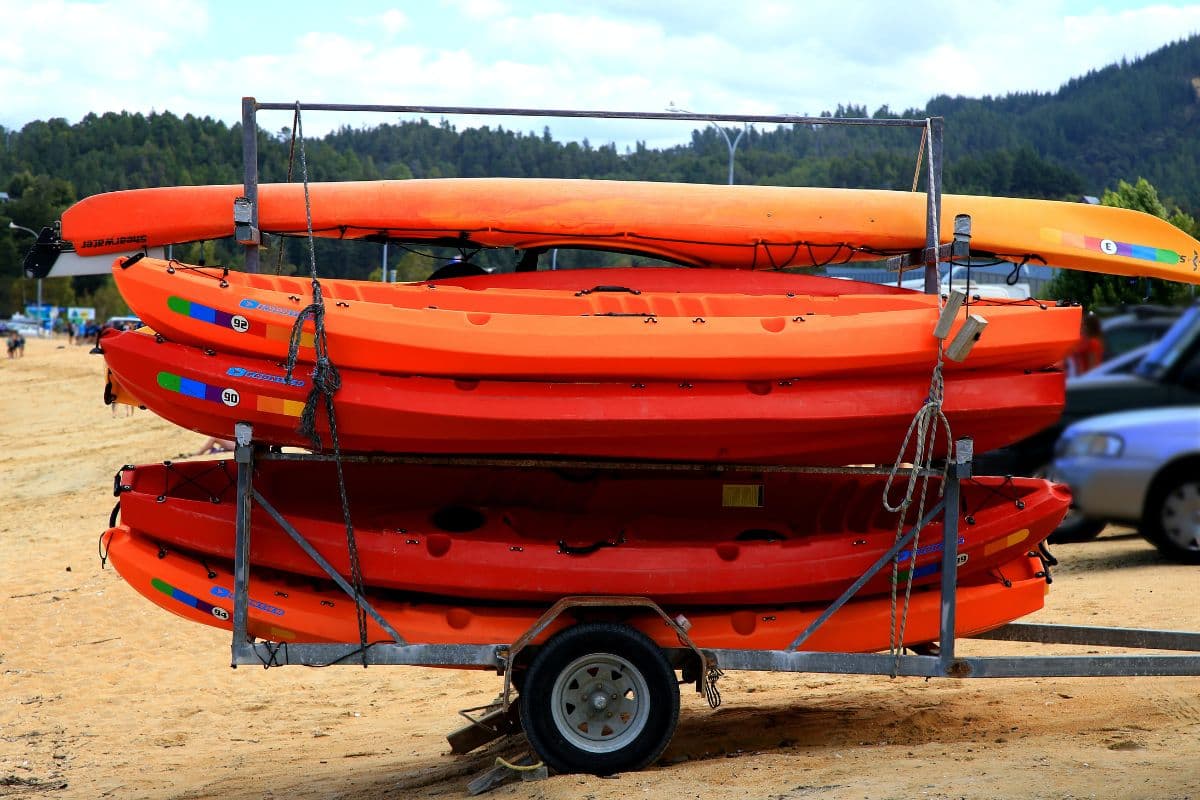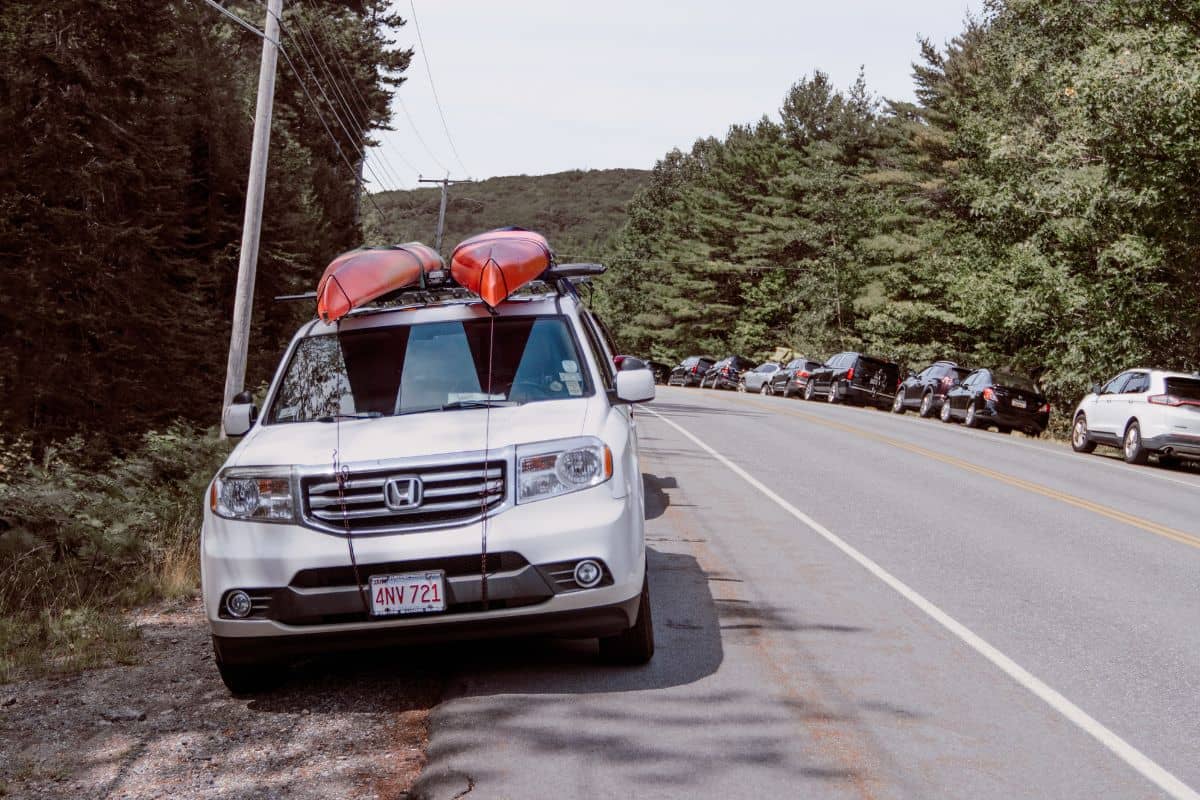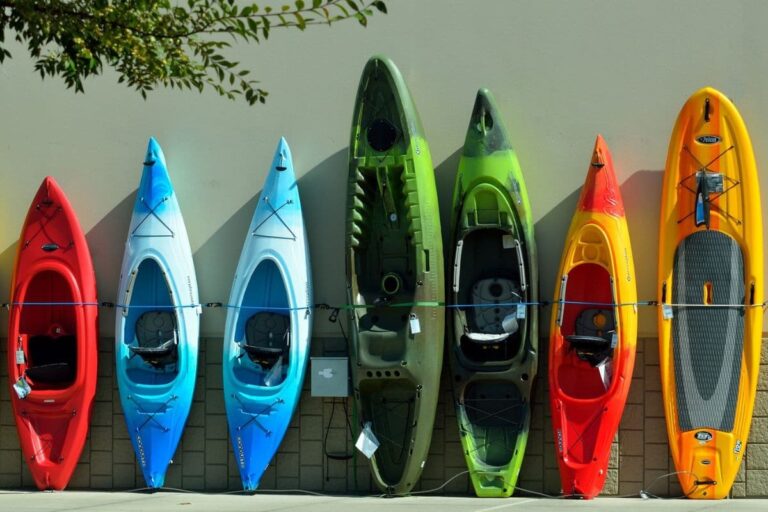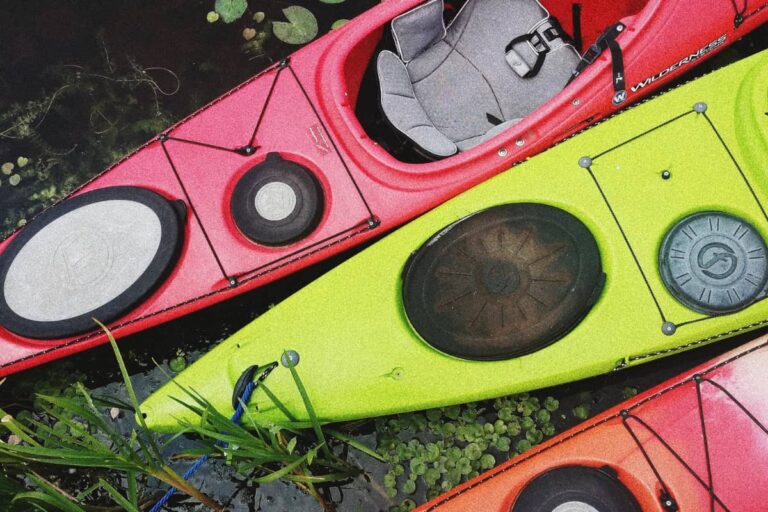How To Transport A Kayak Without A Roof Rack?
Do you have a kayak that you want to take along on vacation?
Perhaps you’re hoping to enjoy some time out on the water, but you don’t want your car to get all dinged up.
Whatever your reason may be, there’s no need to stress over how to get your boat down to the lake.
One of the best ways to transport a kayak is with a roof rack. But what if you don’t have one of those? Don’t worry!
There are multiple ways to get your kayak from point A to point B without a roof rack.
If you don’t have a roof rack, there are still plenty of other methods you can use to transport your kayak. These include investing in a car rack, opting for an inflatable kayak, using a pickup truck, or a trailer. There are also “DIY” methods, but these are not recommended for long drives or curvy roads.
In this article, we will discuss a variety of ways to transport a kayak without a roof rack.
What Is A Roof Rack?
Roof racks are just what they sound like — bars that sit on top of your car’s roof used to transport kayaks, surfboards, bikes, skis, and more.
These racks can be permanent or removable.
A permanent roof rack system is usually constructed with metal bars, and needs to be installed by professionals.
Removable racks have rubber pads where you attach ratchet straps, bungee cords, netting, or some other kind of tie-down straps.
Transporting a kayak using a roof rack is as simple as strapping it down to the bars and driving off.
How Can I Transport A Kayak Without A Roof Rack?

Unfortunately, not every vehicle comes equipped with a roof rack.
If that applies to you, that means you’ll need to find another method of transporting your kayak.
Luckily, there are several effective alternatives to roof racks out there, many of which won’t cost you a lot of money!
Car Racks
If you have a hatchback or small SUV, the safest way to transport a kayak is using one of many types of car racks.
These racks include a metal or plastic base that bolts directly into the bottom of your vehicle.
Some car racks actually attach to the tow hitch.
This type of rack comes with bars that you attach onto the base, after which you can strap down your kayak using tie-down straps.
Remember to use these tie straps anytime you are transporting your kayak! The last thing you want is for your boat to go flying off the back of your vehicle while you’re driving.
You can find a variety of straps at your local hardware store.
Although it’s not necessary to use straps made specifically for vehicles, you can also find a wide variety of options at automotive stores.
Inflatable Kayaks
If you have a kayak that comes in a small package, like an inflatable kayak, you can deflate it for easy transportation.
With these convenient kayaks, you don’t need any extra equipment to carry them from between your home and the water!
You can purchase inflatable kayaks that fit into a bag, and can be easily inflated with the use of an electric pump.
Pickup Trucks
If you have a pickup truck, you’re in luck! Pickup trucks are great for transporting kayaks because they usually come equipped with a tie-down spot underneath the hooks and rails at the edge of the truck’s bed.
Thread the straps’ ends through the kayak’s front and back carrying handles, then connect them to various tie-down spots around your truck.
If your truck comes with built-in tow points, these are perfect spots to attach your straps.
It may take a little fiddling around to get your kayak secured, but once you have it in place, you’ll be ready to go.
Trailers

Loading up is a breeze with a kayak trailer.
This is an especially great option for transporting heavy kayaks, because they don’t require you to lift the kayak up very high.
Just like with the other methods mentioned above, you will need to use tie-down straps to secure your boat after you lift it onto your kayak trailer.
Ensure that both the front and back of your boat, or the bow and stern, are securely attached to your trailer.
Many trailers provide more stability than the other alternatives.
However, the downside of this method is that kayak trailers need to be stored somewhere when they’re not in use.
Tips For Kayak Transportation Safety

Once you’ve decided how you’re going to transport your kayak without a roof rack, you need to ensure that your kayak is secure.
Here are some tips on how to transport your kayak safely:
1. Watch Your Speed
Don’t try to push your car or truck to the edge by driving at high speeds.
This can result in your kayak coming loose, blowing off, or being unsafe for the drive.
You should also note that the added weight from your kayak can affect your gas mileage.
So keep an eye on the gas gauge to make sure you don’t get stranded when toting your kayak!
2. Use Tie-Downs
Tie-downs are meant to keep your kayak from moving around while you drive, and they do just that!
Make sure your straps run across the width of the kayak at both the bow and the stern, and along the length of the boat as well.
Before you start driving, be sure to spend adequate time making sure that your straps are nice and tight.
Purchasing straps with adjustable buckles can help ensure that your kayak is secure for every ride.
3. Watch Weather And Road Conditions
It’s essential to check forecasted weather conditions before heading out on the road with a kayak.
If it’s raining, snowing, or even hailing, it’s best to avoid going out at all costs.
These scenarios can increase the likelihood that your kayak will fall off your car in transit.
4. Check Your Straps Regularly
It’s important to keep an eye on your tie-down straps, just in case anything begins to come loose.
Luckily, most kayak carriers come with extra clips and safety straps you can use, so if there is a problem with a strap, you should still be okay.
5. Be Mindful Of Curves
If you’re driving with a kayak on a curvy road, slow down as much as you can until the road straightens out again.
The constant shifting of weight could cause a tie-down strap to come loose or shift out of position.
Using heavy-duty straps with cam buckles can minimize this issue by allowing you to tighten and secure your boat more firmly.
6. Check All Of Your Gear
Before you hit the road, it’s also important to check all of your gear.
Make sure that nothing is located where it can fall out or blow away easily.
Trust us — this is an important step that many people forget to take!
7. Have Someone Watch You Drive Off
If possible, try to have another kayaker meet you at the kayak drop-off location, and watch you pull away.
Their “towing eyes” can alert you right away if anything appears loose or problematic.
Can You Just Put the Kayak in the Back of a Car?
No! You should never transport a kayak directly inside your trunk or back seat, because it will damage your car’s interior.
It’s also unlikely that your car is wide enough or long enough for this type of transportation.
For these reasons, it is best to transport a kayak on some kind of carrier outside of your vehicle.
If You have a standard hitch-mounted carrier, what do you need to know?
Standard hitch-mounted carriers are usually not advisable for transporting kayaks because of how close they are to the ground.
If you have a heavy kayak that is loaded, it could cause the rear end of your vehicle to make contact with the pavement.
This problem is especially exacerbated in wet or icy conditions.
DIY Kayak Transport Methods
You can create a “DIY” (do-it-yourself) roof rack by using a few pool noodles to cushion the kayak against the roof of your car, and strapping it down with a ratchet strap.
The pool-noodle method may work in a pinch for short distances, but pool noodles are not intended for this purpose, and are not exactly ideal for curvy roads or long distances.
You can also use foam blocks as a similar DIY kayak rack method. To do this, attach the blocks to your car roof using ratchet straps that go around the vehicle’s roof, creating a loop around the car roof by coming in through open doors on each side.
Using pool noodles works best, because you can thread each ratchet strap through the pool noodles themselves, adding an extra layer of security.
Leave your car doors open, and after threading each strap through a pool noodle, loop the front straps through the front doors, and the back straps through the back doors.
However, be careful not to over-tighten each strap on your DIY roof rack, because this could cause damage to your vehicle.
Once you attach the foam blocks or pool noodles onto your vehicle’s roof rack system, you will then secure your kayak to the foam blocks or pool noodles using more ratchet straps.
You’ll need to spread out the straps so that the width of both the bow and stern of the boat are securely tied down to the rack.
If you have two kayaks that need to be transported, it will be more difficult to do so using pool noodles.
While these DIY racks may sound like a good solution, they’re not the most secure way to transport your kayak.
If you suspect that your foam block or pool noodle method is not safe enough for you to transport your kayak, we recommend taking on the extra cost and using a proper kayak carrier instead.
Conclusion
If you are struggling to figure out how you can transport your kayak without a roof rack, consider investing in a carrier system with receiver bars and mounts that attach perfectly to your vehicle.
Doing so will ensure that you have a safe ride for you, your kayak, and surrounding vehicles, whether you are on the freeway or turning onto a country road.
By investing in the right transportation system, you will save yourself time and money, and ensure that both your vehicle and your kayak are not damaged.
Table of Contents






